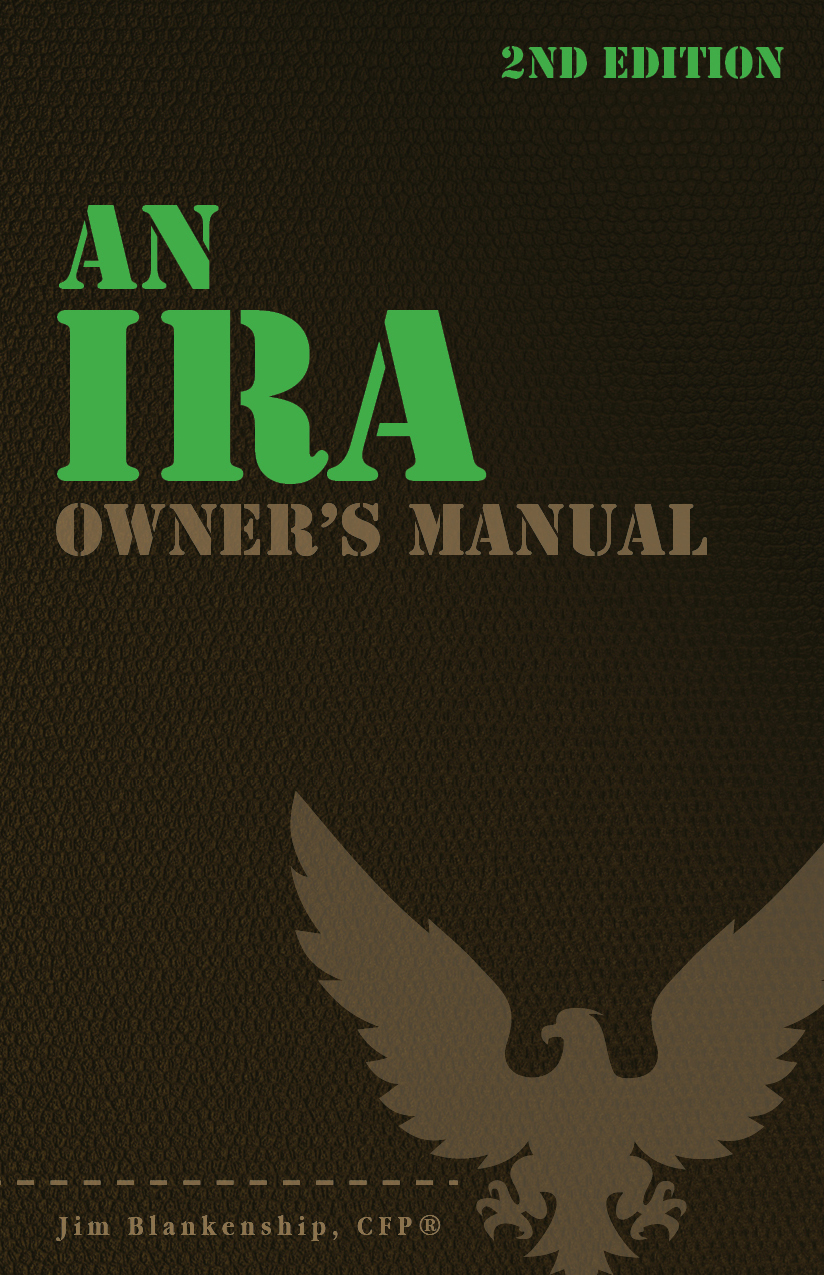When you take money out of your IRA or 401(k) plan (or other qualified retirement plan, such as a 403(b) plan), if you’re under age 59½ in most cases your withdrawal will be subject to a penalty of 10%, in addition to any taxes owed on the distribution. There are many exceptions to this rule though, and the exceptions are not the same for all types of plans. IRAs have one set of rules, and 401(k)s have another set of rules. The exceptions are always related to the purpose for which the money was withdrawn. The exact same dollars withdrawn do not have to be used for the excepted purpose, just that the excepted expense was incurred. IRA Exceptions It is important to know that all distributions from your traditional IRA are subject to ordinary income tax, but some distributions are not subject to the early withdrawal penalty. The list […]
qrp
Avoid Awkwardness in the Afterlife–Confirm Your Beneficiary Designations
This is a topic that I cover with all clients, and one that I recommend you for everyone with retirement plans and other accounts with beneficiary designations. Too often we think we have the beneficiary designation form filled out just the way we want it, and then (once it’s too late) it is discovered that the form hadn’t been updated recently – and the designation is not what we hoped for. I made this recommendation to a client not long ago. He assured me that he had all of his designations set up just the way he wanted. His wife, sitting next to him in our meeting, asked him to make sure – talk to the IRA custodian and get a copy of the designation as it stands today. A bit miffed about it all, he agreed to do so, and did the next day. Guess what he found – […]
A Few Facts to Know About Retirement Plan Contributions
As we near the tax filing deadline, there are a few things you need to be aware of as you consider your retirement plan contributions for tax year 2012 (or whatever the prior tax year is, if you’re reading this sometime later). Regular IRA contributions are due by the filing deadline, with no extensions. That means April 15, 2013 for the 2012 tax year. Your contribution for 2012 is considered made “on time” if your payment is postmarked by midnight on April 15, 2013. Perhaps you wish to make a more substantial contribution to a retirement plan – in 2012, you can contribute up to $50,000 to a Keogh plan. That amount is limited to 20% of the net self-employment income, or 25% of wage income if the individual is an employee of the business. Keogh plan contributions can be made by the extended due date of your return – […]
Rolling Over a 401(k) into a New Employer’s Plan
When you change jobs you have a choice to make regarding your retirement plan at former employer. If the plan is a 401(k), 403(b), or other qualified plan of that nature, you may have the option to roll the old plan into a plan at your new employer. The new employer’s plan must allow rollovers into the plan – this isn’t always automatic. Most plans will allow rollover of former employer’s plans, but not all. Once you’ve determined that the plan will accept a rollover, you should review the new plan to understand whether or not it makes sense to roll your old plan into it, or choose another option. Other options may be: rollover the old plan into an IRA, convert the old plan to a Roth IRA, leave the old plan where it is, or take a distribution from the old plan in cash. In this article we’ll […]
Pros and Cons of the Roth 401(k)
The Roth 401(k) first became available in January 2006, is an option available for employers to provide as a part of “normal” 401(k) plans, either existing or new. The Roth provision allows the employee to choose to direct all or part of his or her salary deferrals into the 401(k) plan to a separate account, called a Designated Roth Account, or DRAC. The DRAC account is segregated from the regular 401(k) account, because of the way the funds are treated. When you direct a portion of your salary into a DRAC, you pay tax on the deferred salary just the same as if you had received it in cash. This deferred salary is subject to ordinary income tax, Medicare withholding, and Social Security withholding if applicable. The unique thing about your DRAC funds is that, upon withdrawal for a qualified purpose (e.g., after you have reached age 59½, among other […]
How Dollar-Cost-Averaging Can Work to Your Advantage for Your 401(k)
When you invest in your 401(k) plan with salary deferrals from each and every paycheck, you are taking part in a process known as Dollar-Cost-Averaging (DCA). This process can be advantageous when investing periodically over a long span of time, by smoothing out the volatility of the market and giving you an average cost of your investment shares over time. How does this work, and how can it be advantageous? Dollar-Cost-Averaging When deferring income with each paycheck, typically you will be investing in your 401(k) plan each pay period, whether monthly, bi-weekly, or weekly. Each pay period the same amount is deferred and invested, no matter what the price of the underlying investments are at the time. Since you’re always putting the same amount into the investment, when the price of the shares is higher, you purchase fewer shares; when the price is lower, you are purchasing more shares. Note: […]
Defined Contribution vs. Defined Benefit Plans
Many employers have made retirement plans available for their employees, and sometimes there are multiple types of plans that the employee can participate in. These retirement plans fall into two categories: Defined Contribution and Defined Benefit plans. In this article we’ll cover the differences between the two types of plans. Defined Benefit (DB) Plans The older type of retirement plan is the Defined Benefit Plan. (We’ll refer to this as DB for the rest of the article.) DB plans are generally the old standard pension-type of plan, and this category of plan is named as it is because the benefit is a defined amount in a pension plan. By a defined amount, we mean that a formula is used to calculate the amount of pension that you’ll receive. The formula typically uses factors such as your years of employment, your average salary (either over your entire career, or perhaps over […]
History of the 401(k)
Back in 1978, the year of 3 popes, Congress passed the Revenue Act of 1978 which included a provision that became Internal Revenue Code section 401(k). The 401(k) has roots going back several decades earlier, with many different rulings (Hicks v. US, Revenue Ruling 56-497, and Revenue Ruling 63-180, among others), providing the groundwork for the specialized tax treatment of salary deferrals that Section 401(k) enabled. More groundwork for the 401(k) as we know it was laid with the passage of the Employee Retirement Income Security Act (ERISA) of 1974, in that the Treasury Department was restricted from putting forth a particular set of regulations that would have reduced or eliminated the tax-deferral benefits of deferred compensation plans. After the Treasury Department withdrew the proposed regulations in 1978, the way was cleared to introduce the 401(k) plan with the Revenue Act. This particular section of the Code enabled profit-sharing plans […]
Receive a Tax Credit For Saving
Starting (or staying with) a savings plan can be difficult to do. After all, it’s often difficult enough to just get by on your earnings day-to-day, week-to-week, before reducing the take-home pay that you’ve worked so hard for by putting it into a savings plan. The thing is though, once you start a savings plan, you’ll be surprised at how little it “hurts” to start putting small amounts aside. After a while, you won’t even miss it. In addition, the IRS has a way to help you get started – it’s called the Saver’s Credit. This is a credit that you receive on your tax return, simply for putting money aside in a savings plan. Pretty sweet deal, if you asked me! The IRS recently released their Newswire IR-2012-101, which details how the plan works and how you can take advantage of it. The full text of IR-2012-101 is below: […]
Join in the Movement – Add 1% to Your Savings This Year!
Over the past several weeks we’ve been writing articles to encourage all Americans to add at least 1% more to savings in the coming year. More than 20 of my fellow bloggers have submitted articles, and these articles include many great ideas that you can apply in order to increase your savings rate in the coming year. Since many employees are going through annual benefit elections right about now, it’s a very good time to increase your annual contributions to your retirement savings plans. Big changes are easiest to undertake with incremental steps – starting with adding 1% can have a great impact and get the momentum going! Listed below are all of the articles that I’ve been notified about so far – 22 23 in all! These folks are very smart, and have shared some great ideas. You owe it to yourself to check it out, and then take […]
Take Your RMDs From Your Smallest IRA
Here’s a strategy that you could use to simplify your life: when you’re subject to Required Minimum Distributions (RMDs) after age 70½, you have the option of taking separate RMDs from each IRA that you own OR you could take all of your RMDs from one account if you like. As long as you calculate your RMD based upon all of the IRAs that you own, you are free to take the full amount of all of your RMDs from one single account (or several accounts) if you wish. And keep in mind that the “I” in IRA stands for Individual – so you can’t aggregate your IRAs with your husband’s, for example. By doing so, you could eliminate the smaller account(s) if you wish, thereby reducing paperwork (fewer accounts and statements). As well, you don’t have to keep track of as many accounts for estate planning. But then again, […]
RMDs Don’t Have to Be Taken in Cash
But… It’s a little-known fact that distributions from an IRA or a Qualified Retirement Plan can be taken in kind, rather than in cash. You can in any circumstance take distribution from the account of stocks, bonds, or any investment that you own, just the same as if it were cash. The downside to this is determining valuation for the distribution. You could value the distribution on the day of the distribution by opening price, closing price, average price, or mean between the day’s high and low prices. Where you really get into trouble is when the security that you own is very thinly-traded, such as a small company or very infrequently-traded bonds. These can be very hard to value on the date of distribution, and as you might recall, the value of a distribution for Required Minimum Distributions (RMDs) must be valued appropriately in order to ensure that the […]
What Is Net Unrealized Appreciation?
We’ve discussed how to utilize the Net Unrealized Appreciation (NUA) treatment of distributions from your qualified retirement plan (also known as QRP, meaning 401(k), 403(b), and other plans) – one of the earlier articles on Net Unrealized Appreciation can be found at this link. Even though the process is explained in the earlier article, we didn’t discuss just what exactly can be treated with the NUA option. How do you determine what part of the distribution can be treated with capital gains treatment? In order to determine what is to be treated as unrealized appreciation, we need to define what has to be treated as ordinary income from such a distribution. Briefly, the way that the NUA option works is that you take a complete distribution of your QRP account within one tax year – and you have the option to treat a portion of your account distribution with capital […]


 Sterling Raskie, MSFS, CFP®, ChFC®
Sterling Raskie, MSFS, CFP®, ChFC® The latest in our Owner’s Manual series, A 401(k) Owner’s Manual, was published in January 2020 and is available on
The latest in our Owner’s Manual series, A 401(k) Owner’s Manual, was published in January 2020 and is available on  A Medicare Owner’s Manual, is updated with 2020 facts and figures. This manual is available on
A Medicare Owner’s Manual, is updated with 2020 facts and figures. This manual is available on  Social Security for the Suddenly Single can be found on Amazon at
Social Security for the Suddenly Single can be found on Amazon at  Sterling’s first book, Lose Weight Save Money, can be
Sterling’s first book, Lose Weight Save Money, can be  An IRA Owner’s Manual, 2nd Edition is available for purchase on Amazon. Click the link to choose the
An IRA Owner’s Manual, 2nd Edition is available for purchase on Amazon. Click the link to choose the  Jim’s book – A Social Security Owner’s Manual, is now available on Amazon. Click this link for the
Jim’s book – A Social Security Owner’s Manual, is now available on Amazon. Click this link for the  And if you’ve come here to learn about queuing waterfowl, I apologize for the confusion. You may want to discuss your question with Lester, my loyal watchduck and self-proclaimed “advisor’s advisor”.
And if you’ve come here to learn about queuing waterfowl, I apologize for the confusion. You may want to discuss your question with Lester, my loyal watchduck and self-proclaimed “advisor’s advisor”.